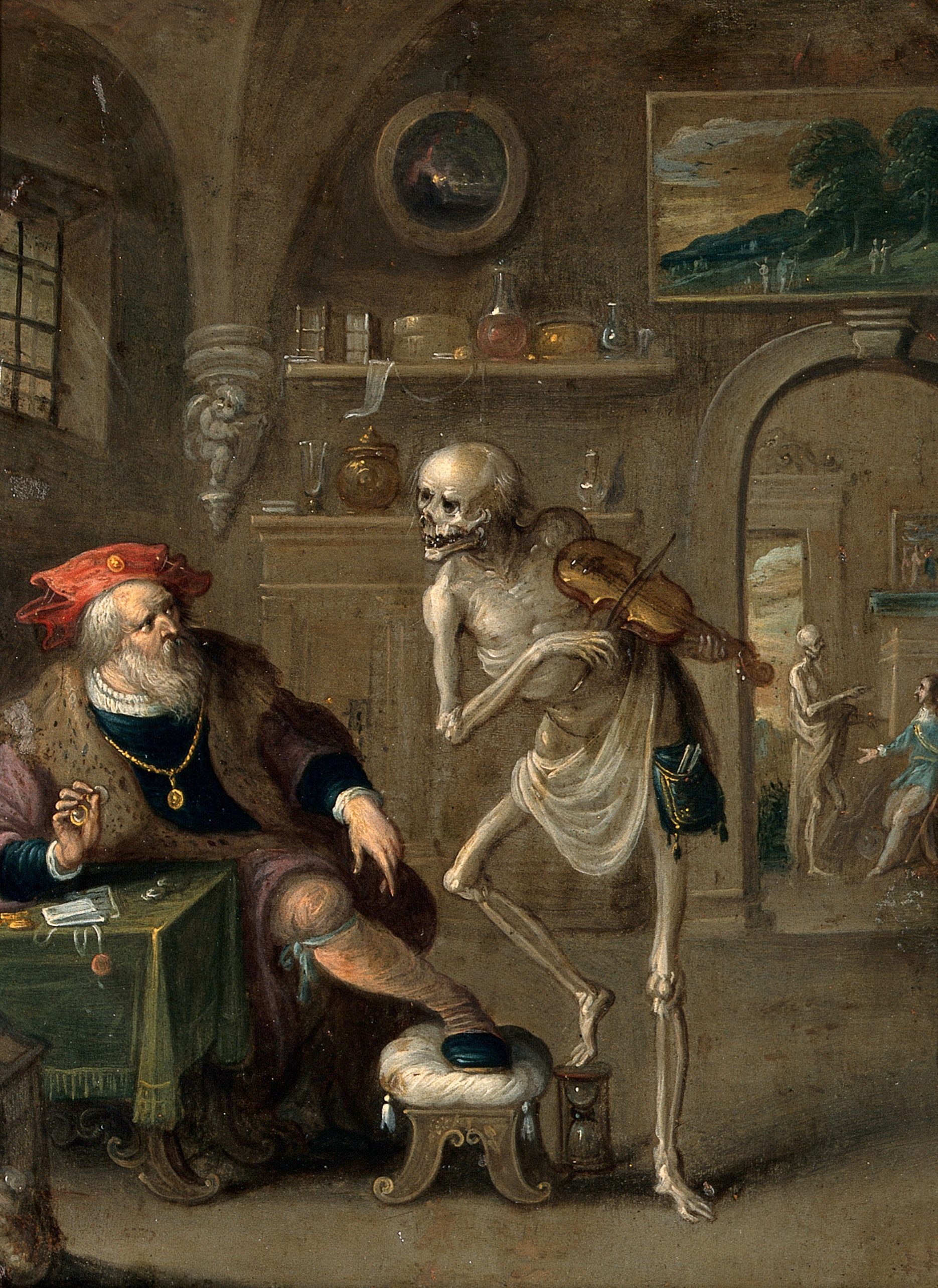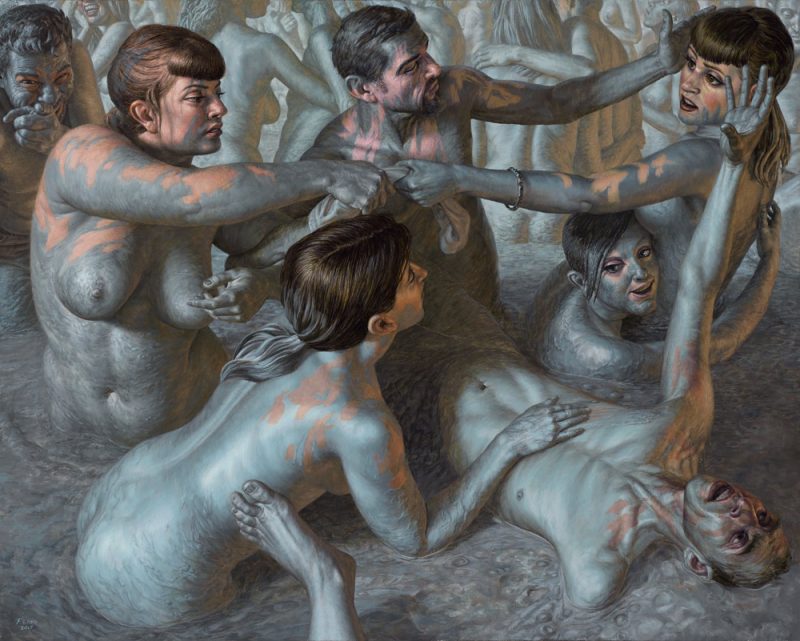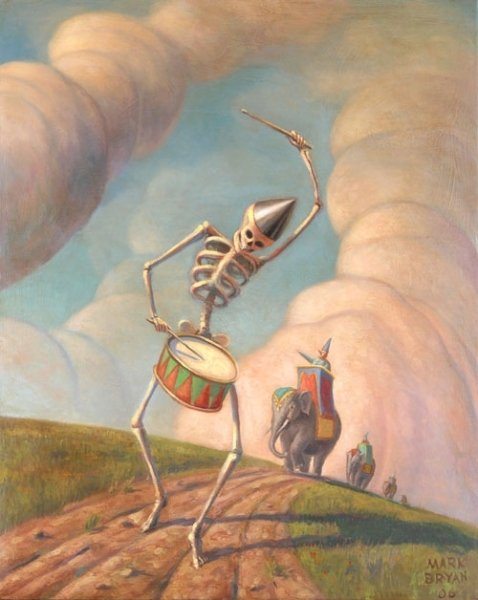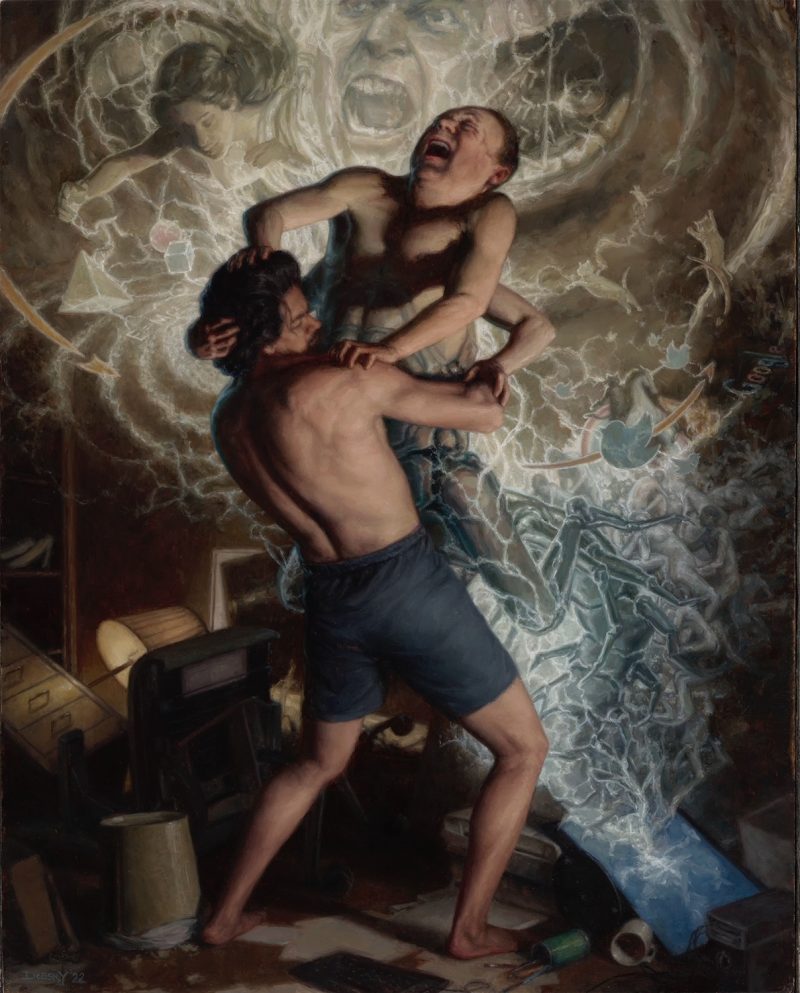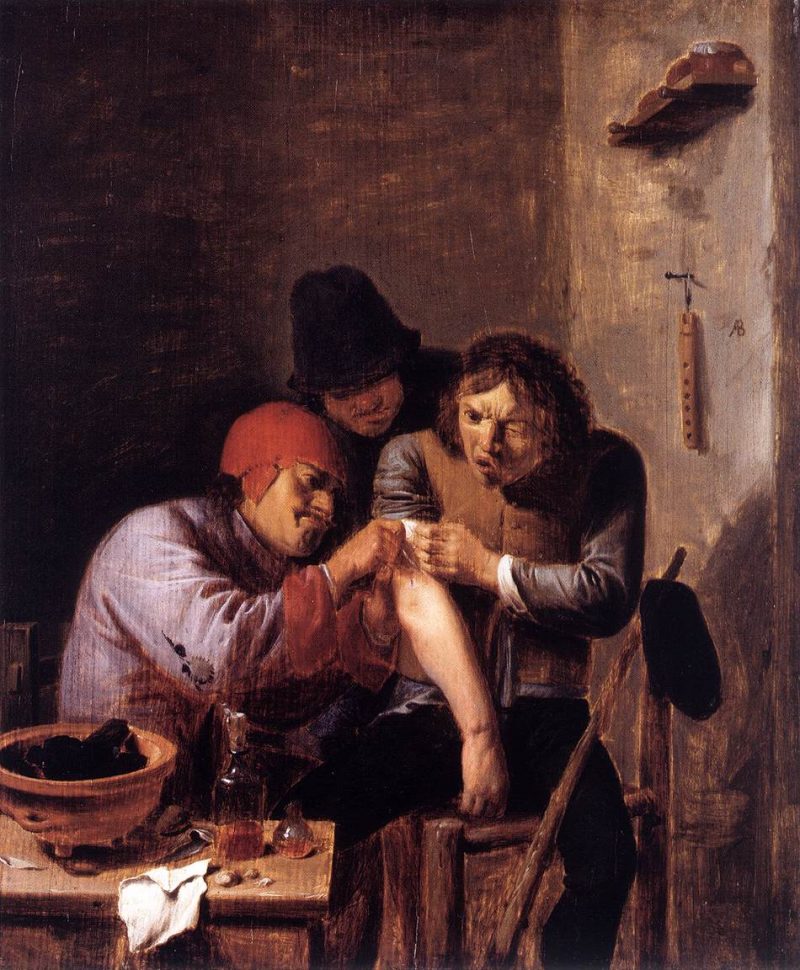Death has finally come for the miser’s soul. The scene is set in the miser’s lavishly decorated home and he wears expensive clothes and jewellery. Death’s foot rests on an empty hourglass while he plays the fiddle for the final dance. The miser points to his bandaged leg, signaling that he cannot dance. Account books on the table in front of the miser could reference unpaid debts. ⠀
In the next room we see an earlier scene from the life of the miser – Death comes for the young miser, handing him papers. The miser pleads for his life and we assume that he made a pact with Death; a life of riches for his soul. Now the miser’s time is up and nothing can save him, not even his riches. It’s a momento mori image meant to remind us that we should spend our short time on this earth wisely.
